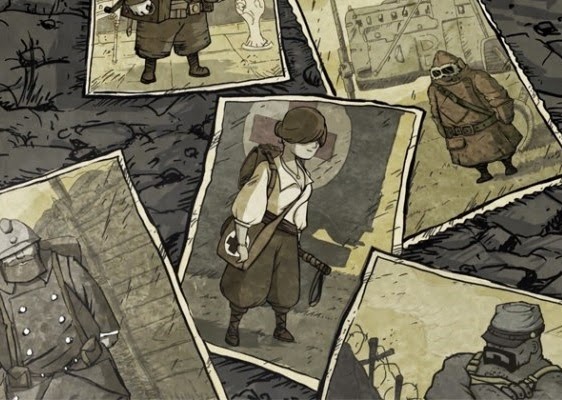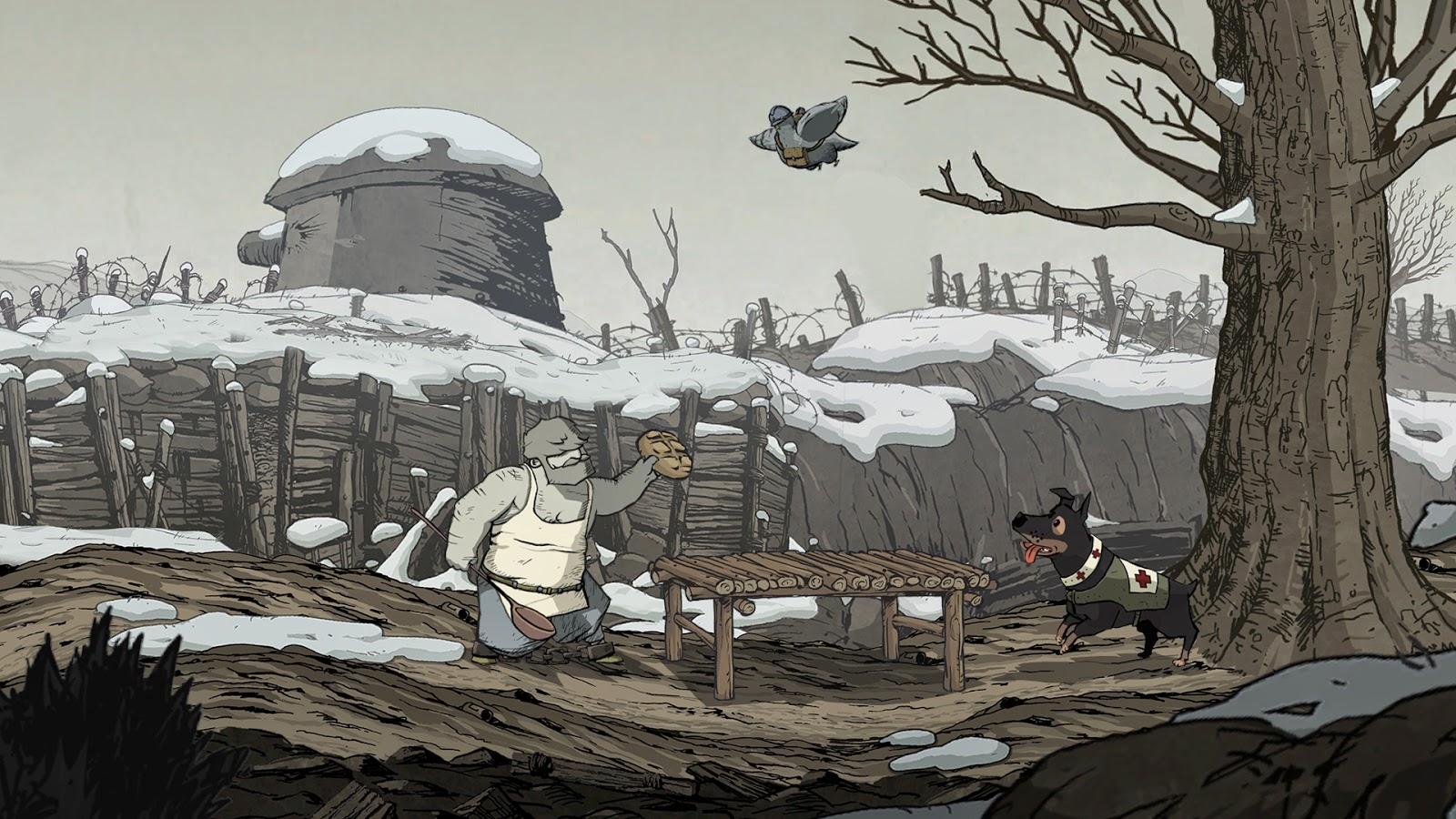 Review by Matt S.
Review by Matt S.
Valiant Hearts was one of my picks for E3 2014, courtesy of a trailer that had me in tears. It seemed like, after all the years that people have been making games, this was the game that would finally tackle the subject of war in a mature, intelligent fashion. In an industry inundated with hyperviolent, nonsense shooters a game with a mature, human look at the real impact of the war is an important game; one that shows that killstreaks and exploding heads are not the only material for an effective game about armed conflict.
Valiant Hearts is everything that games about war should be. It’s nothing short of brilliant.
Valiant Hearts is a game about war in which players have a minimal capacity to cause harm, in fact. This 2D adventure game is filled with simple but clever puzzles, and in almost none of them are players empowered to harm other digital human beings. There’s the occasional enemy that forms part of the puzzle, but players need to distract them, knock them out, or scare them away. Even as both allies and enemies fall like flies around the player’s character, and even as bloody war plays out in the background, the characters that the player controls are not violent individuals. Instead the game is a tale of survival, looking at how humans (and a dog) can come together to escape true horror.
The game, which is set during World War 1, works hard to be an authentic remembrance to mark the 100 year anniversary of the commencement of The Great War. It’s filled with archival photos that act as an encyclopaedia of sorts to describe the context of the war and the important events, battles, and technologies that were a part of it. On top of that, the game’s narrative is based on letters – real letters – that soldiers wrote to their loved ones back home during the actual war. During the war these letters were the only form of communication that these people had available to them, and there is something profoundly sad about playing a game that is a visual representation of a letter, knowing that the scrap of paper describing what is going on will only be delivered to the intended recipient months after we, the player, have experienced them.
The whole game pulls on the same heart strings that the E3 trailer did through its near-perfect storytelling. Within the stories of the soldiers is a clear message; an overwhelming sense of sadness at the fact that that war is a waste. It’s a waste of lives as unwilling soldiers battle with an enemy that includes their own family. Another character is driven to the war in a wasteful quest for revenge after the conflict brings tragedy to his non-combatant loved ones. Yet another character is a sympathetic recruit into the armies of the enemy; the game’s writers are very careful to avoid taking sides in this game in its quest to focus on the stories of the individuals affected by war. This is a story of relationships forged by conflict and personal heroism rather than a grand conflict that makes statements about good and evil.
These stories are, one and all, touching. By the end of Valiant Hearts I felt drained. Not because it’s a long game, nor because it’s especially challenging. Rather, I was emotionally drained, effected by some remarkably simple stories that are told masterfully, as much through the animation as the voice-over dialogue that sets the scene between levels. So confident is Ubisoft Montpellier in its animation and UbiArt framework (the platform that was used for both Rayman and Child of Light before this game), that there’s not a word of spoken dialogue between characters. The animation and events going on around them is more than enough to make us as players connect with their plight.
What’s especially impressive about Valiant Hearts, however, is that it’s never heavy handed in its themes. As sad as the ultimate story is, and as critical as the game is on war and the costs that it extracts, the game is simply filled with exaggerated animation and colourful characters that are, at times, downright funny. The UbiArt framework allows for some truly spellbounding levels of detail in environments and character animation, and Valiant Hearts once again does the engine justice. The fact that the world of Valiant Hearts is so colourful should be a lesson to many other game developers – you can create an emotional connection to a game, and then make a serious point in it, without resorting to a dark, angry aesthetic.
And, perhaps most importantly of all, Valiant Hearts achieves some educational objectives as well. So fixated is world history on the events of World War 2, that our education system (especially here in Australia) and the conversation that people have around military history fails completely to adequately address World War 1 beyond the basics (and here in Australia, a little bit of Gallipoli thrown in). Playing Valiant Hearts inspired me to research further into some of the conflicts on the mainland of Europe during the period, and that is a very sincere compliment for any game based on historical events.
As I mentioned, most of the game plays out a bit like a 2D point-and-click adventure. Players progress through the game by solving some simply environmental puzzles by manipulating the environment around them. In one scene a character needs to lob a grenade over a wall, for instance, to dislodge some rubble and create a path over some dangerous terrain.
Interspersed between these puzzle sections are the odd action sequence. One moment you’ll be dodging bombs while involved in a military charge. The next you’ll be driving a car and avoiding everything from more bombs to land mines while classic music matches with the on-screen action in something that resembles a rhythm game more than anything else.
Checkpoints are very generous and there’s nothing in here that will trap players for more than a few moments. It’s clear that Valiant Hearts was a story that the developers wanted people to experience right through to its heart wrenching conclusion, rather than a game that is meant to challenge in a more traditional sense of the word. There are a couple of hidden objects to track down for the OCD player, but as a game itself Valiant Hearts is deliberately limited, in preference of being an example of interactive art.
But in a way Valiant Hearts is a challenge to everyone in the industry; it’s a challenge to the publishers churning out the same old “war games,” and it’s a challenge to all the players that continue to buy into these games without really thinking about what they are playing. War isn’t fun, and it has a real impact on the people that are involved in it. It’s games like this one that, critically, remind us that there is a human side to war.
– Matt S.
Editor-in-Chief
Find me on Twitter: @digitallydownld











